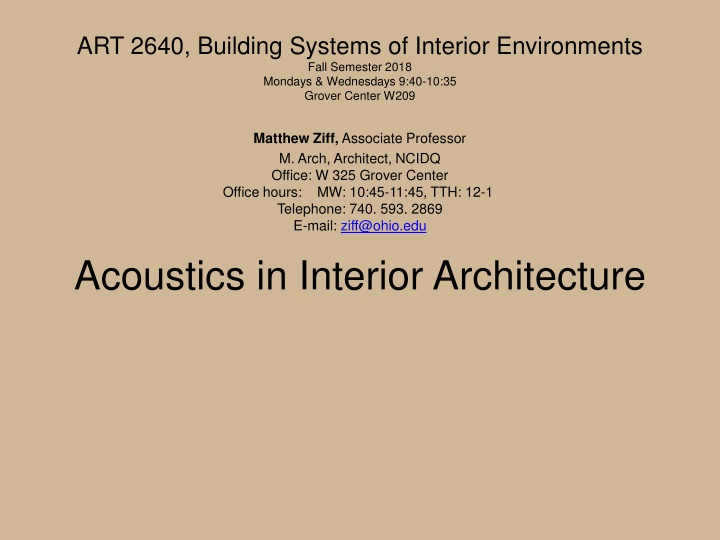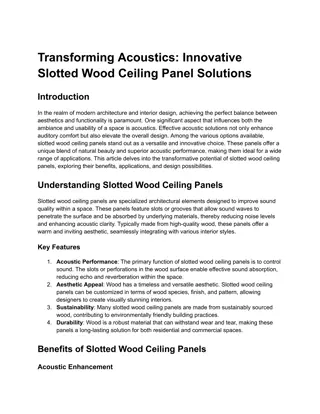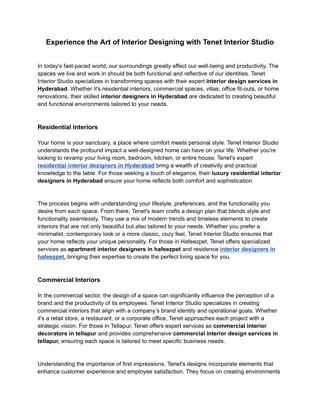Acoustics in Interior Environments: Design & Perception
Discover the intriguing relationship between architecture and sound in interior spaces. Explore the fundamentals of acoustics, including the impact of materials, shapes, and room design on sound propagation and human perception. Uncover the intricacies of acoustic properties, noise control, and sound diffusion in architectural design. Delve into practical examples and principles of architectural acoustics, and learn how to create optimal listening environments while enhancing privacy and comfort.
Download Presentation

Please find below an Image/Link to download the presentation.
The content on the website is provided AS IS for your information and personal use only. It may not be sold, licensed, or shared on other websites without obtaining consent from the author.If you encounter any issues during the download, it is possible that the publisher has removed the file from their server.
You are allowed to download the files provided on this website for personal or commercial use, subject to the condition that they are used lawfully. All files are the property of their respective owners.
The content on the website is provided AS IS for your information and personal use only. It may not be sold, licensed, or shared on other websites without obtaining consent from the author.
E N D
Presentation Transcript
ART 2640, Building Systems of Interior Environments Fall Semester 2018 Mondays & Wednesdays 9:40-10:35 Grover Center W209 Matthew Ziff, Associate Professor M. Arch, Architect, NCIDQ Office: W 325 Grover Center Office hours: MW: 10:45-11:45, TTH: 12-1 Telephone: 740. 593. 2869 E-mail: ziff@ohio.edu Acoustics in Interior Architecture
Acoustics in Built Spaces Some of the questions that arise when design and acoustics come together: The human relationship between sound and architecture. Sound, noise, and vibration what s the difference? The fundamental relationship between architecture, shape, form, volume and materials. Acoustics and the design process
US Gypsum Continuing Education Series: Understanding Acoustics in Architectural Design Some of the components in the study of acoustics: Speed of sound, frequency, and wavelength. Fundamentals of sound propagation Sound Propagation, Representation & Measurement Sound Transmission mechanisms Sound isolation Acoustic properties of materials Noise and vibration theory and criteria Noise and vibration control from building systems and its implication on architectural design
Acoustic Bricks Acoustic issues in designing interiors: Fundamentals of sound in enclosed spaces Surface material and geometry sound absorbing, reflecting and diffusing properties Relationship to human perception sound reflection sequence, sound in 3d, reverberation Good and bad examples of acoustics in the built environment principles of architectural acoustics: how we hear and perceive sound both indoors and outdoors, what are appropriate criteria for listening environments and privacy, and how architectural decisions of layout, materials, room shape, and design impact what we hear in and about a space.
USG Ensemble Acoustical Drywall Ceiling Elbphilharmonie Concert Hall, Hamburg, Germany Acoustic Diffusion: Breaking Up Sound























